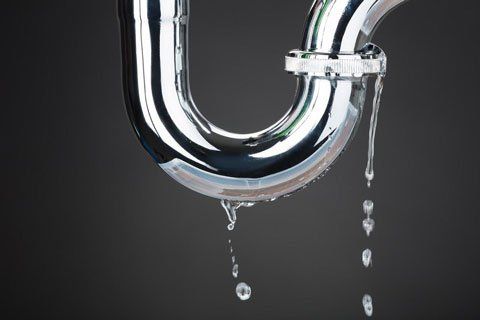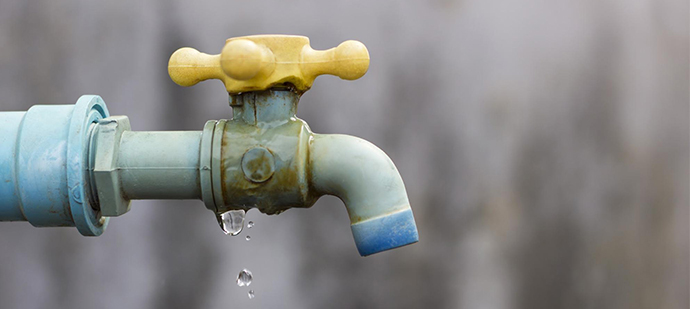6 Ways to Find Concealed Water Leakages in Your House
6 Ways to Find Concealed Water Leakages in Your House
Blog Article
In this article down the page you'll find a lot of amazing facts regarding Leaking water lines.

The minute you discover a leak, calling your plumber for repairs is the most effective remedy. Nonetheless, some tiny water leakages might not show up. Below are some hacks that help if you can not discover it with your naked eyes.
Early detection of leaking water lines can minimize a possible catastrophe. Apart from saving you money, it will reduce the irritation as well as aggravation.
Examine Water Usage
Evaluate your water expenses as well as track your water intake. As the one paying it, you must notice if there are any inconsistencies. If you identify sudden changes, regardless of your usage coinciding, it indicates that you have leakages in your plumbing system. Keep in mind, your water expense ought to drop under the exact same array every month. An abrupt spike in your expense indicates a fast-moving leak.
At the same time, a stable rise every month, despite having the same routines, reveals you have a sluggish leak that's additionally slowly escalating. Call a plumber to thoroughly inspect your building, specifically if you feel a cozy location on your floor with piping beneath.
Check and Analyze the Situation
Home owners should make it a habit to inspect under the sink counters and also also inside cabinets for any bad odor or mold and mildew growth. These 2 warnings show a leakage so punctual interest is needed. Doing routine evaluations, even bi-annually, can conserve you from a significant trouble.
Examine the Water Meter
Checking it is a surefire method that assists you discover leakages. If it relocates, that suggests a fast-moving leak. This suggests you might have a slow leak that might even be below ground.
Asses Outside Lines
Don't fail to remember to inspect your exterior water lines too. Ought to water permeate out of the connection, you have a loose rubber gasket. One tiny leakage can squander bunches of water and also increase your water costs.
Do a Food Coloring Examination
When it pertains to water intake, 30% comes from commodes. Test to see if they are running effectively. Drop flecks of food color in the tank and wait 10 minutes. If the color somehow infiltrates your dish throughout that time without flushing, there's a leak in between the storage tank and bowl.
Extra notably, if you know your home is already old, keep a watchful eye on your heaters, hose pipes, pipelines etc. Look for stainings and weakening as many pipelines and also devices have a life span. They will additionally naturally wear away due to tear and use. If you suspect leaking water lines in your plumbing system, don't wait on it to rise. Call an expert plumber as soon as possible so you don't end up with a dreadful mess in your home.
The moment you discover a leakage, calling your plumber for fixings is the finest option. Some little water leaks may not be visible. Inspecting it is a guaranteed method that aids you uncover leakages. One little leak can throw away tons of water and surge your water expense.
If you presume dripping water lines in your plumbing system, do not wait for it to rise.
How to Know If Your Home Has a Hidden Leak
Water Meter Reveals Inexplicable Water Usage
If you’d like to test whether or not there’s a leak somewhere in your home, you can do this using your water meter. Here is how to conduct the test:
Don’t use any water in your home for at least 30 minutes; this also means not turning on faucets or water-using appliances.
Go outside, and check your water meter for activity.
If your water meter shows that there was activity, even though no one was using any water, this proves that there is a leak in your home.Visible Mold or Mildew Growth
Leaks behind walls create moist, dark environments that allow mold and mildew to grow and thrive. Eventually, you might see mold growth forming on the wall closest to a hidden leak.
If mold is growing in an area that receives a high amount of moisture, such as a bathroom, it may simply be an indication that better ventilation is needed. However, if you see mold growth on a wall or the ceiling in an area where you would not expect, you probably have a hidden leak.
Musty, Mildew Odor
Sometimes you might not be able to see the mold or mildew that is growing as a result of a leak. However, the smell can give the problem away just as easily. If you catch a whiff of something musty, there’s a good chance that old water is collecting somewhere in your home that you can’t see.
Stained/Warped Walls, Ceilings, or Floors
When your home soaks up water, a variety of red flags can become visible, including ceiling stains, bubbling drywall, warped walls, and sagging floors. While these issues can be caused by excess humidity, they can also be signs that a pipe or plumbing connection has started leaking behind your walls.
Inexplicably High Water Bill
After a while, you get a general sense for what your water bill should be. If you own a pool or sprinkler system, your bill will tend to be higher during summer. However, if you receive a water bill that seems especially high, and you can’t figure out what caused it, then you may have a hidden leak somewhere that’s increasing your bill.
https://www.plumbingjoint.com/blog/2019/july/how-to-know-if-your-home-has-a-hidden-leak/

As a passionate reader on Leaking water lines, I figured sharing that article was sensible. Liked our piece? Please share it. Help another person find it. Many thanks for your time invested reading it.
Report this page